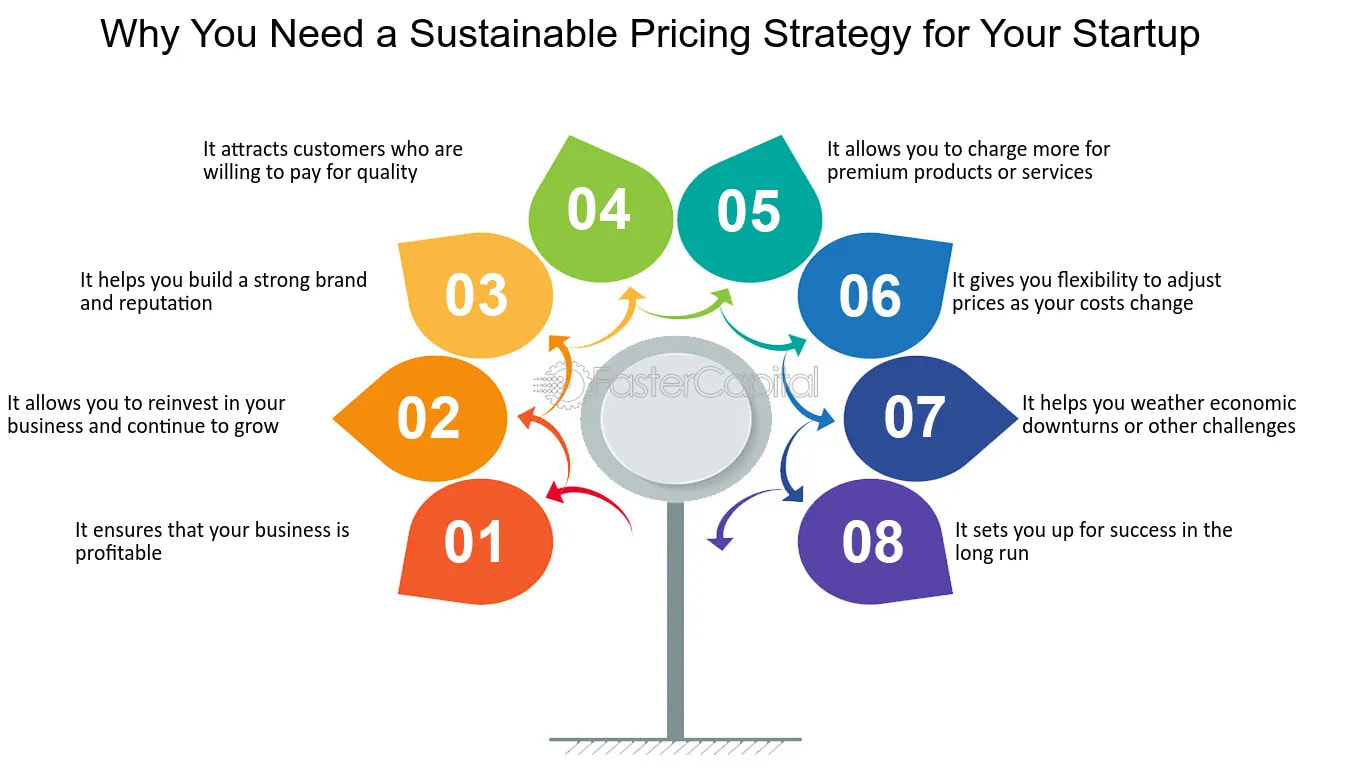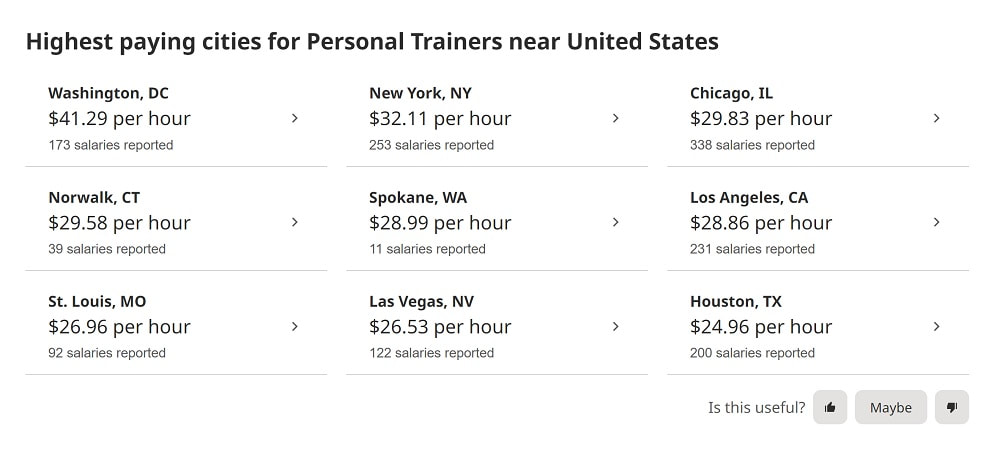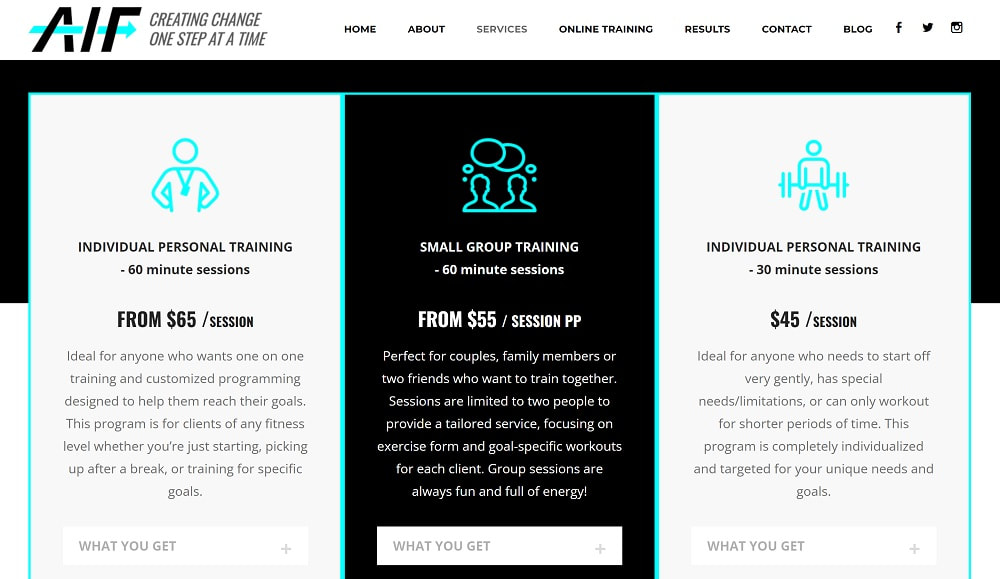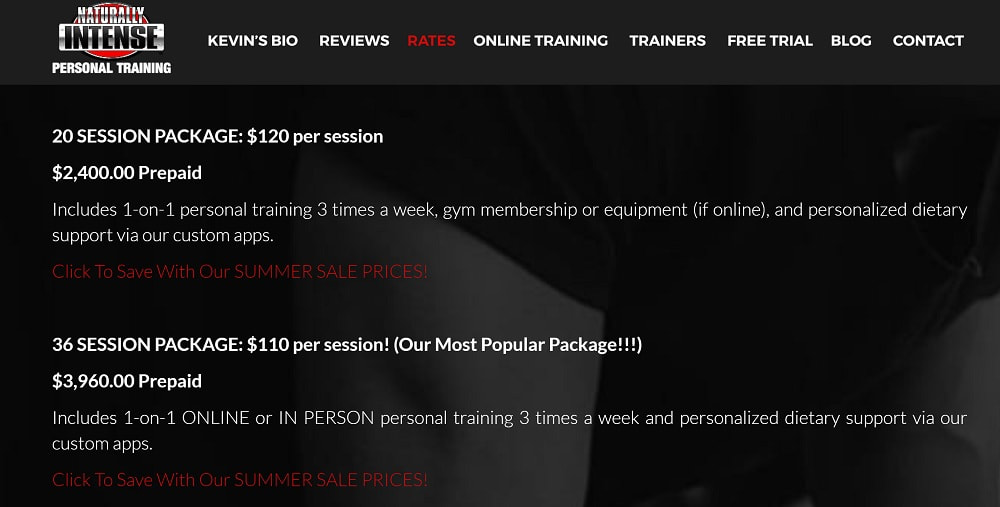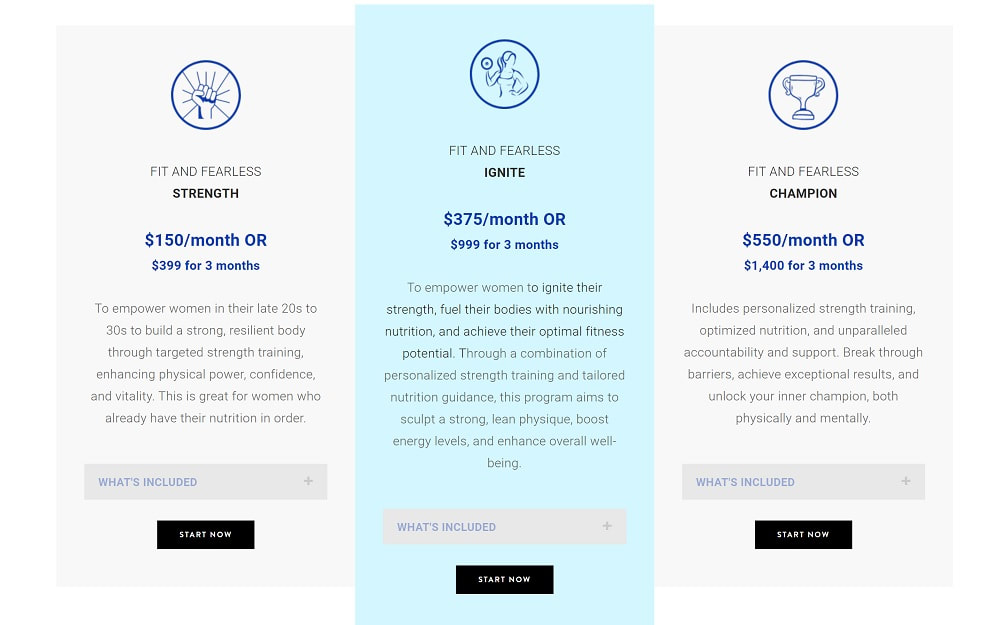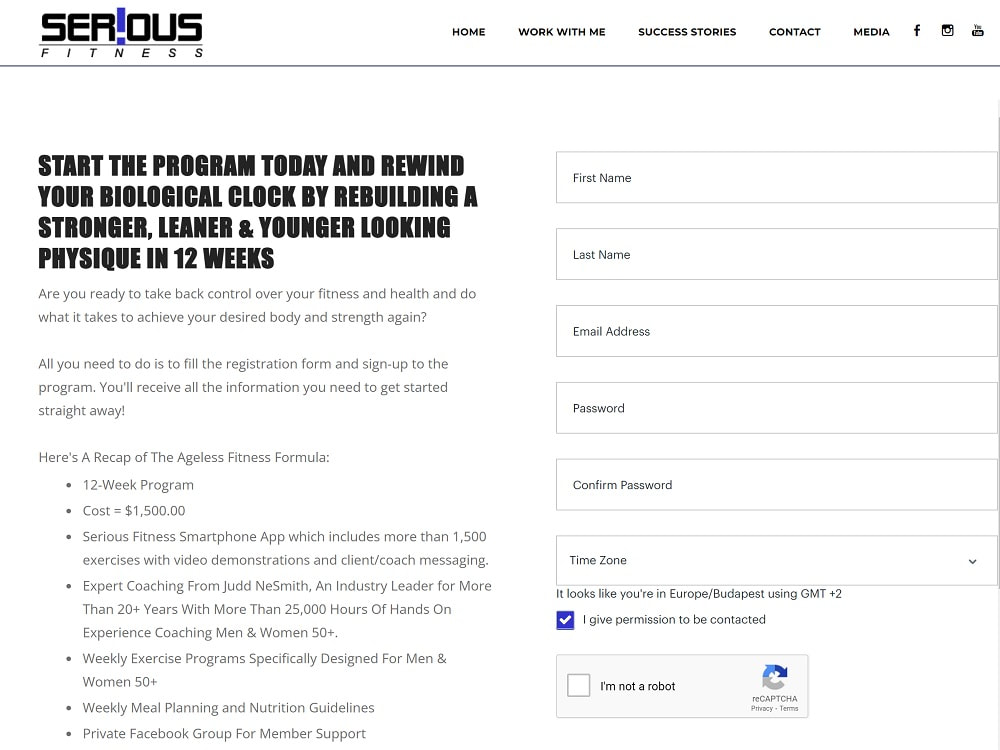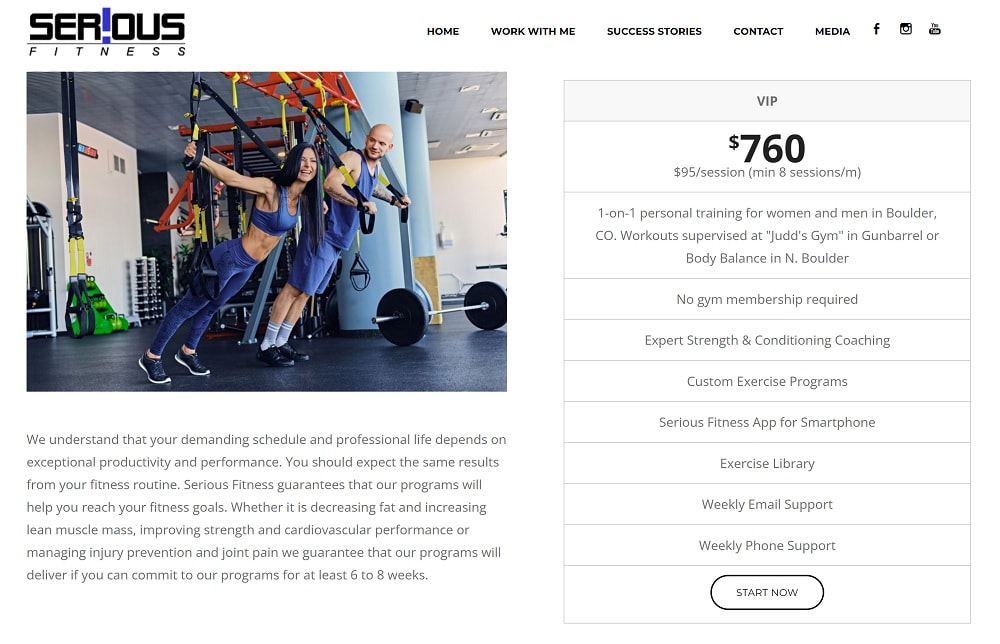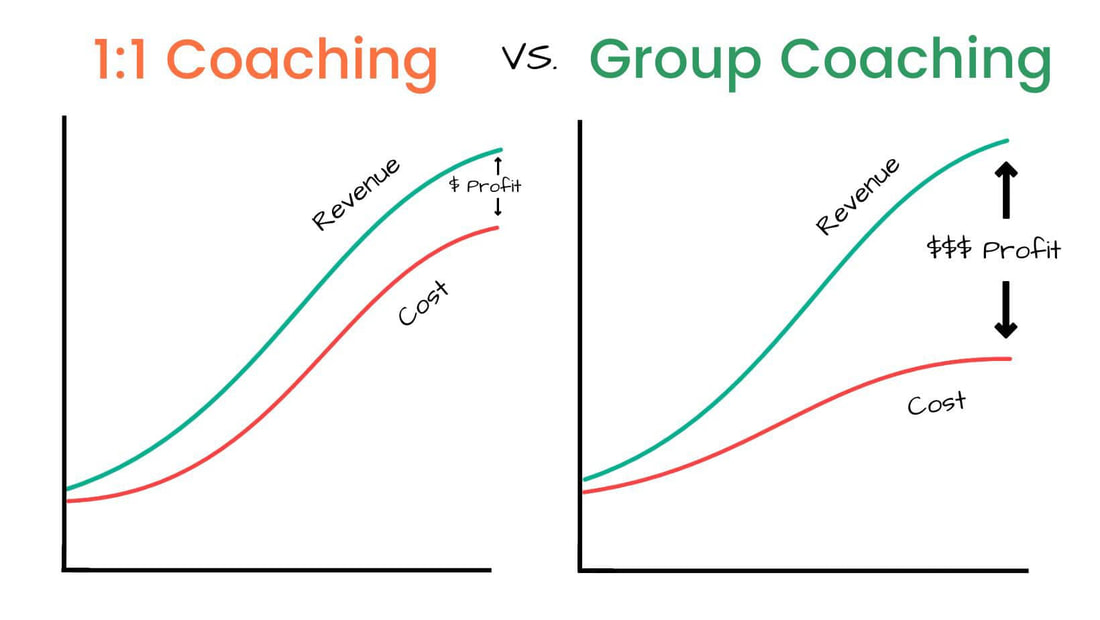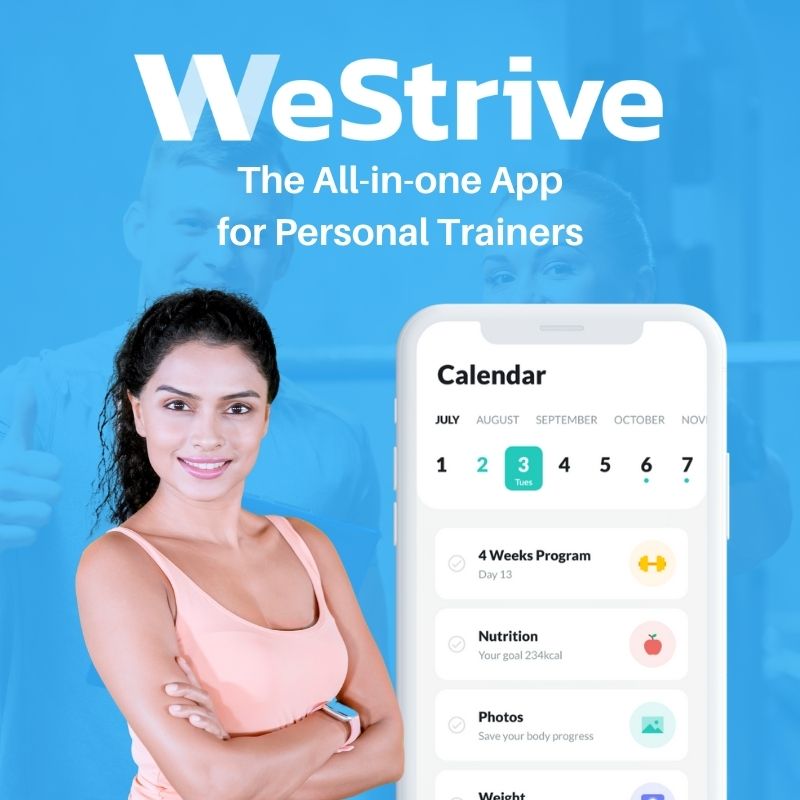|
FREE GUIDE: HOW TO LAUNCH AN ONLINE PERSONAL TRAINING BUSINESS
IN JUST 7 DAYS
✓ The new, better way of launching an online business
✓ The fastest way to create in irresistible offer ✓ A simple system to sell to clients who are interested |
|
Are you a personal trainer looking to take your business to the next level? One of the most crucial decisions you'll make as a trainer is how to price your services effectively. Pricing is a critical aspect of any business; personal training is no exception. But how do you determine the right price for your services? In this ultimate guide, we'll explore various pricing strategies, factors to consider when setting your rates, and how to communicate your value to potential clients. We'll also delve into the importance of creating packages, setting up payment systems, and how to adjust your prices over time. Whether you're just starting or are an experienced trainer, this guide will give you the tools and insights to price your services and grow your personal training business confidently. So, let's begin with the ultimate guide to pricing your personal training services!
Table of Contents:
The Importance of Pricing Your Fitness Services Right
Setting the right price for your personal training services is crucial for the success of your business. If your fees are too high, you may scare away potential clients, but if your prices are too low, you may not be able to cover your costs or make a profit. Therefore, finding the right balance that works for you and your clients is essential.
Pricing Mistake #1: Pricing Too Low
When new to the business, you may be tempted to lower your prices to attract more clients. However, this approach may attract clients looking for a bargain, and they may not be the right fit for your business.
On the other hand, if you price your services too high, you may attract clients looking for a luxury service you cannot provide. Therefore, finding the sweet spot that works for you and your ideal clients is essential. Pricing Mistake #2: Pricing Too High
Setting the right prices for your personal training services is crucial to building a sustainable business. If you price your services too low, you risk undervaluing your expertise and hard work. Conversely, if you price too high, you may struggle to attract or retain clients over time.
By finding the sweet spot between these two extremes, you can create a pricing structure that allows you to earn an adequate income while keeping your clients happy and loyal. In turn, this can help you grow your reputation and word-of-mouth referrals, which are essential to the long-term success of any personal training business. Pricing Mistake #3: Value Miscommunication
Beyond building a sustainable business, pricing is crucial for communicating value to your audience and prospective clients. When you charge a fair fee reflecting your expertise and the quality of your services, you signal to your audience that you take your work seriously and are confident in the value you can deliver.
This, in turn, helps you attract clients willing to invest in their health and fitness goals and who value your guidance and support. By setting your prices strategically and communicating the value of your services, you can differentiate yourself from competitors and establish yourself as a go-to expert in your field. Factors to Consider When Pricing Your Personal Training Services
Now that we've established the importance of pricing your fitness services right, let's explore the factors you need to consider when setting your rates.
#1. Your Experience and Credentials
Your experience and credentials play a significant role in determining your rates. If you're a new trainer with little expertise, you may need to charge lower rates to attract clients. However, if you have years of experience and multiple certifications, you can charge higher rates that reflect your expertise and credentials.
#2. Location
The location of your business can also impact your rates. If you're located in a wealthy area, you may be able to charge higher rates than if you're located in a less affluent area. Therefore, it's essential to consider the market in your area when setting your rates. Similarly, if you're in a bigger city, you'll likely be able to charge more than if you live in a small town or village further away from the urban areas.
#3. Overhead
Your overhead costs, such as rent, equipment, and insurance, also play a role in determining your rates. If your overhead costs are high, you may need to charge higher rates to cover your expenses and make a profit. If you find that even charging the highest rate sensible for your area and expertise doesn't cover your overhead or bring in any profit, consider evaluating your business model and creating an updated business plan.
#4. Target Market
Your target market also plays a role in determining your rates. You can charge higher rates if you're targeting high-end clients willing to pay top dollar for personal training services. Remember that they also expect you to deliver a high-end service. However, if you're targeting clients on a budget, you may need to charge lower rates to attract them and create a business model where you can still be profitable.
#5. Competition
Your competition can also impact your rates. If personal trainers in your area charge similar rates, you can only stay competitive if you stay in that price range or offer something extra they don't. On the other hand, if there aren't enough personal trainers in your area to serve people who need fitness services, you can go higher.
By considering these factors, you'll be able to set rates that are fair, competitive, and reflective of your skills and expertise. However, you can use different pricing models to structure your rates. Pricing Models for Personal Training Services
When it comes to pricing your fitness packages, there are different models you can use. Each model has pros and cons, and deciding which works best for your business is up to you. Here are some of the most common models:
#1. Hourly Rate
This model involves charging clients an hourly rate for your services. Hourly rates can range from $50 to $200 per hour, depending on your experience, location, and target market. One advantage of this model is that it's easy to understand and allows you to charge for the time you spend with each client. However, there may be more profitable models, as you're limited by the number of hours you can work.
#2. Package Deals
Package deals involve offering clients a set number of sessions for a fixed price. For example, you may offer ten sessions for $1000. The advantage of this model is that it allows you to earn more money per client and encourages clients to commit to a longer-term training plan.
#3. Monthly Retainer
A monthly retainer charges clients a fixed amount each month for a set number of training sessions, or this model works beautifully for online personal training and fitness coaching. For example, you may charge $500 per month for four training sessions. The advantage of this model is that it provides a steady income stream and encourages clients to commit to long-term training.
#4. Time-Limited Packages
Time-limited packages are a popular pricing model for personal training clients, as they provide a clear start and end date for the program, giving clients a clear picture of what they are committing to and what they can expect from the program.
For example, a 12-week personal training program can help clients achieve one fitness goal within a particular timeframe. These packages often come with several weekly training sessions and additional resources such as nutrition guidance or access to online support groups. By offering a comprehensive package tailored to the client's needs, personal trainers can deliver a high-quality service that helps clients build healthy habits and achieve their desired results. Time-limited packages can also be a great way for personal trainers to generate a steady income stream while ensuring that clients are committed and engaged throughout the program. Steps To Price Your Personal Training Services
The steps to take to price your personal training, group training, bootcamp or even online personal training services are actually the same and quite simple.
While the marketing gurus will preach "know your worth" and "it depends on you, real businesses do it this way! 1. Understanding Your Target Market
When pricing your personal training services, it's essential to understand your target market and their willingness to pay. Your target market refers to your ideal clients, and it's critical to consider their needs, preferences, and budget when setting your rates.
If your target market consists of high-end clients willing to pay top dollar for personal training services, you can charge higher rates in exchange for premium services. However, if your target market consists of clients on a budget, you may need to find a business model where they can afford your service but you still earn enough to make a profit. For example, for affluent clients who want special treatment, you offer VIP experience, 1-2-1 training with premium and added features you can think will support their goals. But if you'd like to serve a segment of the general population on average pay, you might offer large or small group training and tailor the workouts and services so that everybody benefits. To understand your target market's willingness to pay, you can conduct market research, such as surveys, focus groups, or interviews. By gathering data on your target market's income, spending habits, and preferences, you can set reasonable and competitive rates. 2. Researching Your Competition
Your competition is another essential factor to consider when pricing your personal training services. You need to know what your competitors are charging, their services, and how they communicate their value to potential clients.
By researching your competition, you'll be able to:
To research your competition, you can:
By researching your competition, you'll be able to set competitive, unique rates and services that reflect the value you provide. 3. Calculating Costs and Profit Margins
When pricing your personal training services, it's essential to consider your costs and profit margins. You need to know how much it costs to provide your services and how much profit you need to make to run a sustainable business.
To calculate your costs, you need to consider:
To calculate your profit margins, you need to consider:
By calculating your costs and profit margins, you can create a business model and set rates to cover your expenses and make a profit while providing value to your clients. Factors For Pricing 1-2-1 Personal Training
Regarding personal training pricing, two standard options are per-hour and per month for 1-2-1 sessions. Per-hour pricing may appeal to clients who prefer a more flexible schedule, as they can book sessions when needed.
However, the challenge with per-hour pricing is that it can be difficult to predict income and timetable. In contrast, per-month pricing offers you more stability and a guaranteed income. Clients also benefit from a set schedule and a dedicated time slot each week, which can help with accountability and consistency. However, per-month pricing may be less appealing to clients with unpredictable schedules or who may need to cancel sessions due to unforeseen circumstances. Ultimately, consider the needs of your ideal clients and your own business goals when deciding on the most appropriate pricing structure. Factors For Pricing Group Training
Group training involves training multiple clients at once, which can be more cost effective for clients and more profitable for you.
Small group personal training of a handful of clients can still provide a personalized approach while costing less for clients and maximizing your earning potential. Large group sessions allow you to draw in a larger audience at a lower price point and potentially upsell some of them to your small group training or 1-2-1 personal training services, depending on which model you want to promote more. Some clients will always stay group class members, but they will be your best promoters to their friends and family. When it comes to pricing your group classes and group personal training, the same models apply. However, encouraging limited-time packages or monthly memberships make more sense if you'd like your clients to commit to their fitness goals. Group training rates can range from $20 to $50+ per person per session, depending on the group size and location. The advantage of this model is that it allows you to earn more money per hour and can be more fun and engaging for clients. From a client perspective, pricing group training sessions on a monthly basis can provide a more cost-effective option than PAYG. It also allows clients to develop a sense of community within the group, which can help with motivation and support. Pricing your group training sessions on a monthly basis can lead to more predictable income and schedule. This will help you better plan for your business and yourself financially and also provide stability. Factors For Pricing Online Training
Regarding online personal training and fitness coaching services, the best pricing model largely depends on the specific structure of the service. For example, an hourly or package deal pricing model could work if the service involves regular one-on-one virtual training sessions. Still, it won't provide you the flexibility you might hope from training people online.
However, monthly or limited-time package deals may be better if your service focuses more on delivering pre-recorded workouts, personalized plans, and occasional virtual coaching sessions. These pricing models allow for a more predictable and consistent source of revenue for you while giving clients the flexibility to access the program at their own pace. Monthly billing can also work well for online personal training services, as it aligns with the ongoing nature of the service and can create a sense of continuing commitment from clients. Limited-time packages with set start and end dates can be a good option if you want to develop a sense of urgency and incentivize clients to commit to the program for a fixed period. Pricing Strategies to Gain a Competitive Edge
Now that we've explored the factors to consider when pricing your fitness services let's look at some strategies to help you price your services competitively.
Create Packages Offering package deals can encourage clients to commit to a longer-term training plan and can be more profitable for you. For example, you may offer a package of ten sessions for a discounted rate. Offer Discounts Offering discounts to new clients or clients who refer others to your business can help you attract new clients and retain existing ones. Bundle Services Additional services, such as nutrition coaching or group training, can help you differentiate yourself from your competitors and provide more value to your clients. Communicate Your Value By communicating your skills, experience, and credentials to potential clients, you can justify your rates and attract clients who appreciate your expertise. Adjust Your Rates Over Time As your business grows and your skills and expertise improve, you can adjust your rates to reflect your increased value. Personal Training Package Price Calculator
We created a Package Price Calculator to help you create a three tiered pricing model for you personal training or online personal training.
How to Communicate Your Pricing to Potential Clients
Communicating your pricing to potential clients is essential to pricing your personal training services. You need to be transparent about your rates and communicate the value you provide.
Here are some tips for communicating your pricing to potential clients:
By effectively communicating your pricing, you'll attract clients who appreciate your skills and expertise and are willing to pay for your services. How to Raise Your Personal Training Prices
Lastly, it's important to remember that pricing your personal training services is not a one-time decision. Over time, you may need to adjust your rates to reflect business, market, competition, and economic changes. Your clients will understand this so long you introduce the changes in time and keep being transparent.
Here are some reasons why you may need to adjust your rates:
Summing Up
In conclusion, pricing personal training services is a delicate balance between providing value to clients and earning a fair wage for your time and expertise. By considering factors such as your experience level, location, niche, and delivery method, you can choose a pricing model that works best for your business. Remember to stay flexible and reevaluate your pricing regularly to ensure your rates align with your goals, values, and market demand.
Ultimately, the key to success in personal training is not just in the numbers but in building strong relationships with your clients, delivering quality services, and continuously improving your skills and knowledge. With the right pricing strategy and approach, you can create a thriving personal training business that helps you achieve your career aspirations and positively impact your clients' lives. |
Our All In One Platform
Check out out all in one business & marketing platform for personal trainers!
WEBSITE BUILDER | FUNNELS |MEMBERSHIPS | SCHEDULING| EMAIL MARKETING| PAYMENTS| CRM | AI ASSISTANT | SURVEYS
Popular Articles
Trusted Partners
We work closely with some of the best service providers in the fitness industry.
Categories
All
|




